Looking for something specific? Use the search tool:
https://rookleys.com/search
-
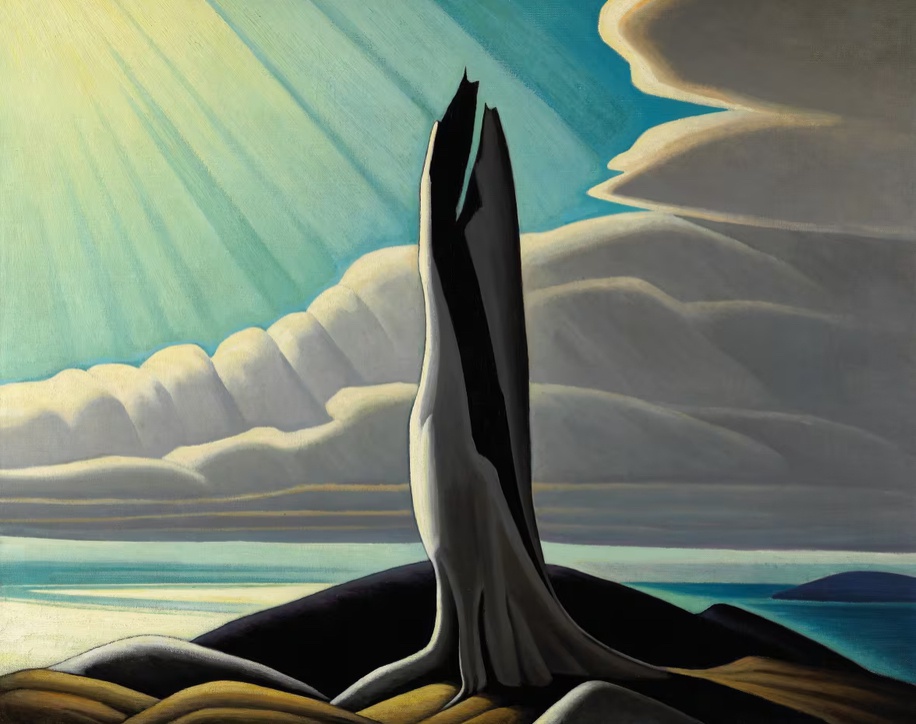
Northshore, Lake Superior by Lawren Harris
Lawren Stewart Harris (23 October 1885 – 29 January 1970) was a Canadian painter, renowned as a visionary leader of the Group of Seven. Celebrated for his powerful, spiritually-infused landscapes of Canada's North, Harris profoundly influenced the trajectory of modern art in Canada.
-
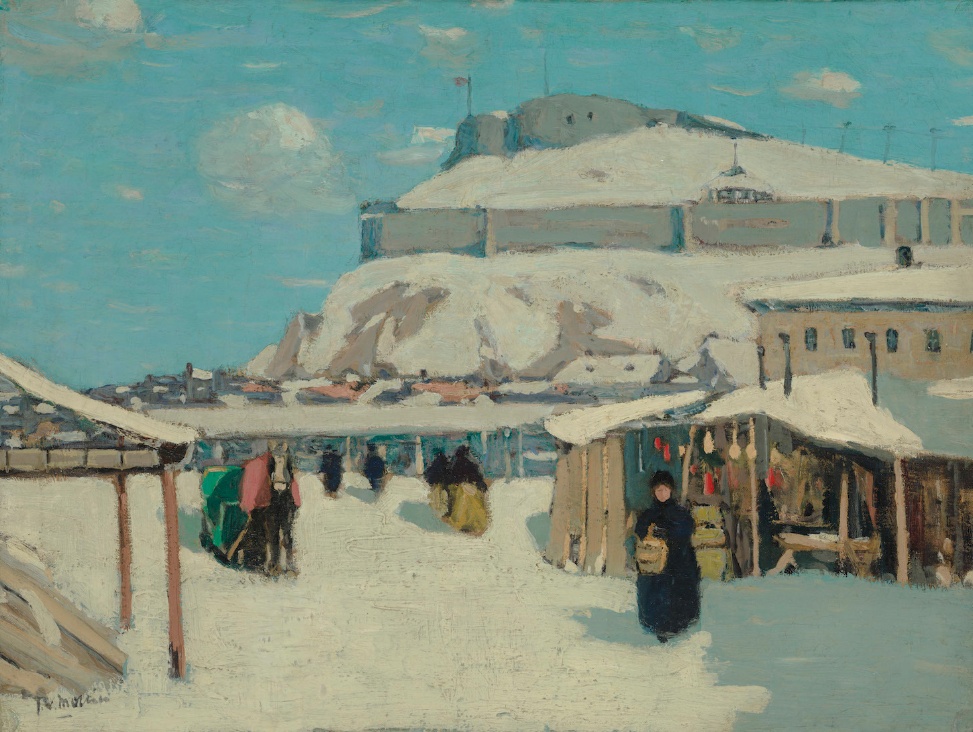
La Citadelle, Quebec by James William Morrice
James Wilson Morrice RCA (August 10, 1865 – January 23, 1924) was a pioneering Canadian landscape painter and modernist who gained international acclaim. Born in Montreal to a wealthy merchant family, he initially studied law at the University of Toronto and Osgoode Hall before abandoning his legal career to pursue art. In 1890, he moved to Paris, France, where he trained at the Académie Julian and studied under Henri Harpignies.
-
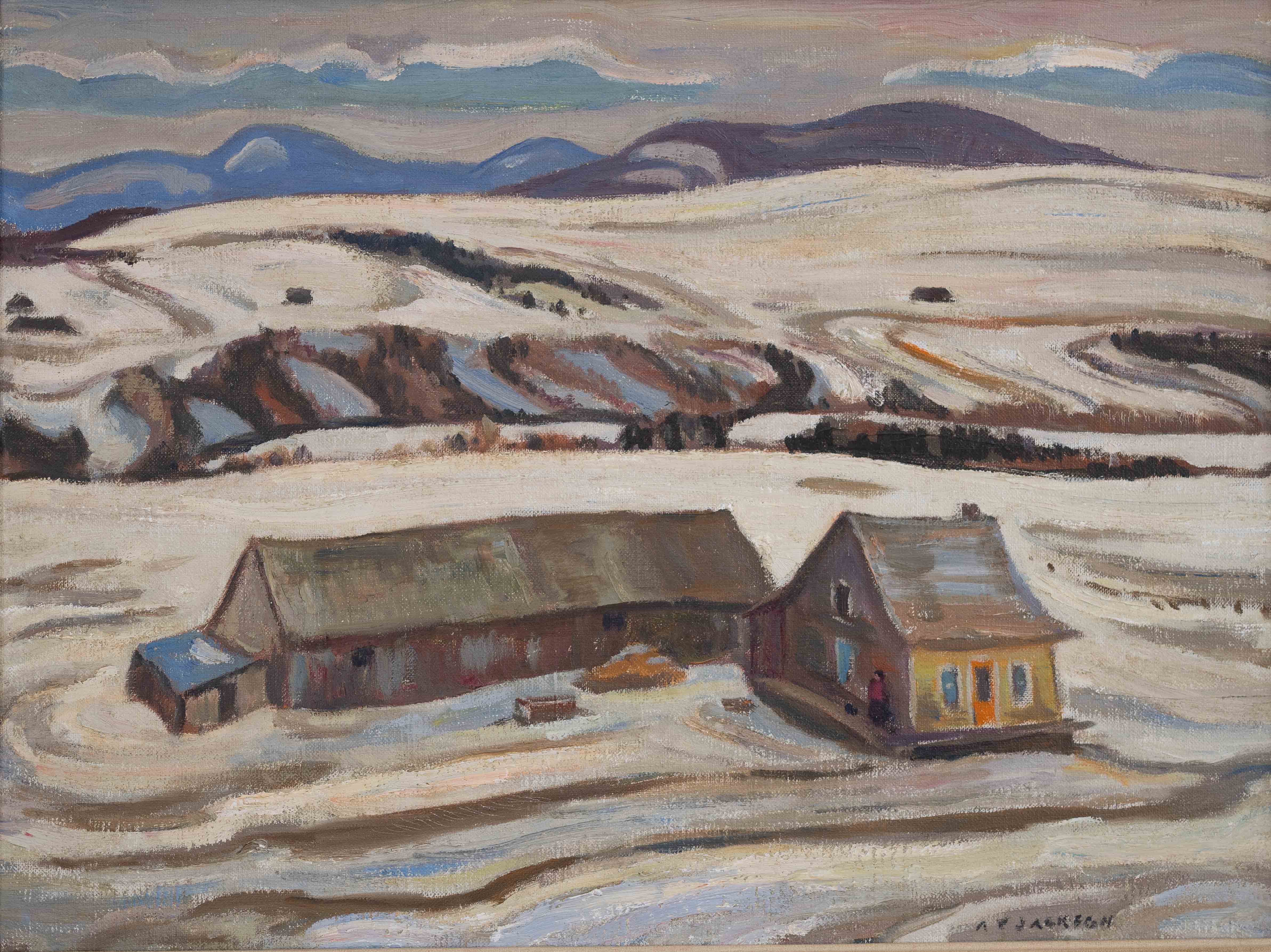
Laurentian Winter by A.Y. Jackson
The Beaver Hall Group was a modernist collective of painters named after the downtown Montreal art studio they all shared. Formed in 1920, unlike other art groups of the time, the Beaver Hall Group was known for its inclusivity; welcoming both men and women.
-

Rookleys Canadian Art in Downtown Ridgeway
Ridgeway, Ontario, Canada is one of the Niagara region’s best kept secrets. This quaint little town, nestled on the Northshore of Lake Erie near the Canadian - American border, is not only a historic location of Canada but also a thriving community full of art, culture and charm. When planning your next visit be sure to add these destinations to your itinerary.
-
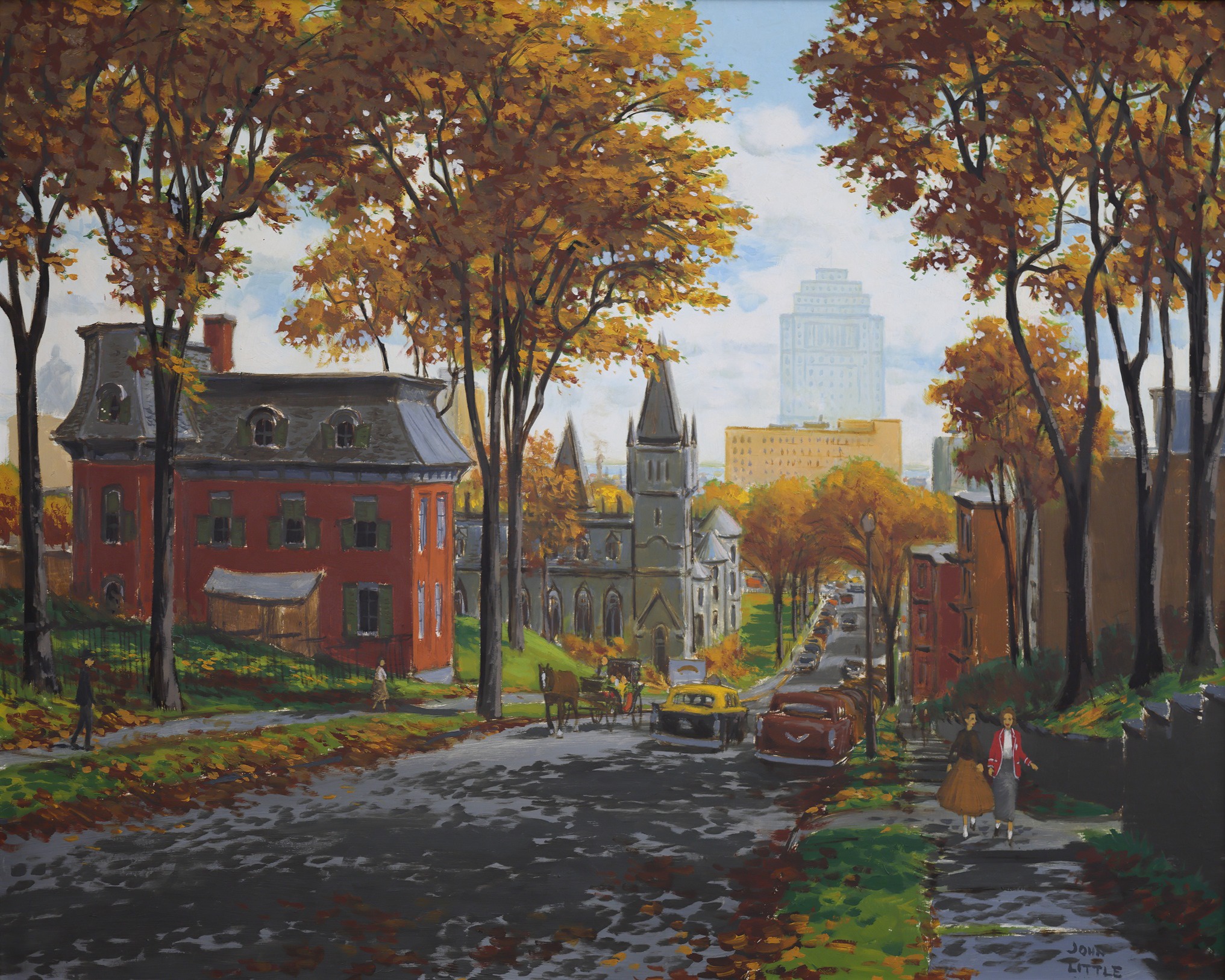
John Little; McTavish Street
In our previous blog on Toronto Art, we discussed how well the city is represented at Rookleys Canadian Art. The same can be said about Canada’s second largest city, Montreal, Quebec. It never ceases to delight us when visitors from Quebec come into our gallery and are shocked by how much Montreal art we have for sale.
-

When one thinks of Canadian paintings, the typical images are of forests, mountains or lakes. While it is true that these rugged features captured most of the attention of the Group of Seven and the generations of painters that followed, there were a number of artists that found inspiration from Canada’s largest city of Toronto.
-

In the Art world, there are some artists who rise to prominence, while others who endure their entire career in completely obscurity. In Canadian Art, the Group of Seven, for instance, command significant attention for their work; their pieces selling for extraordinary prices in the art market. But what is it that distinguishes these artists, and others like them, as invaluable and influential? From supply and demand dynamics, to the significance of their works and the provenance of their art, there are several factors that can impact an artist's value and make them seen as important. At Rookleys Canadian Art, we are focused on historically significant and investment-grade work. By exploring the various facets that impact an artist's legacy, we are able to ensure the art that we offer in our collection will have an enduring impact in the Canadian Art industry and will be a lasting investment to our clients.
-
 Sir Frederick Grant Banting's life narrative is often encapsulated by his monumental contribution to medicine through the co-discovery of insulin, a breakthrough that has saved countless lives since its inception. Born in 1891 in Alliston, Ontario, Banting's journey from a dedicated student to a Nobel laureate and a knighted hero is a narrative of relentless pursuit of knowledge and altruism. Yet, an equally compelling, albeit lesser-known aspect of his life, is his remarkable career in art. This facet not only reveals Banting's multifaceted personality but also underscores the profound connections between science and art, each driven by a deep observation of the world and an intrinsic desire to explore and express complex truths.
Sir Frederick Grant Banting's life narrative is often encapsulated by his monumental contribution to medicine through the co-discovery of insulin, a breakthrough that has saved countless lives since its inception. Born in 1891 in Alliston, Ontario, Banting's journey from a dedicated student to a Nobel laureate and a knighted hero is a narrative of relentless pursuit of knowledge and altruism. Yet, an equally compelling, albeit lesser-known aspect of his life, is his remarkable career in art. This facet not only reveals Banting's multifaceted personality but also underscores the profound connections between science and art, each driven by a deep observation of the world and an intrinsic desire to explore and express complex truths. -
 Step into the twilight world of Charles Comfort with "Nightfall, Lake Clear," a painting that captures the introspective beauty of a Canadian dusk. This article unveils the depth of Comfort's artistry, exploring the quietude and warmth that his 1974 masterpiece so delicately conveys. As we traverse the realms of Comfort's contributions—from his tenure as a war artist to his pivotal role in Canada's art community—prepare to immerse yourself in the reflective serenity that is emblematic of Comfort's legacy.
Step into the twilight world of Charles Comfort with "Nightfall, Lake Clear," a painting that captures the introspective beauty of a Canadian dusk. This article unveils the depth of Comfort's artistry, exploring the quietude and warmth that his 1974 masterpiece so delicately conveys. As we traverse the realms of Comfort's contributions—from his tenure as a war artist to his pivotal role in Canada's art community—prepare to immerse yourself in the reflective serenity that is emblematic of Comfort's legacy. -
 Lorne Bouchard 1913-1978 Houses Near the Village, St. Cyrre de Wendover, QC, 1966In the pantheon of Canadian landscape artists, Lorne Bouchard stands out for his remarkable ability to convey the serene spirit of rural life with his brush. Born in 1913, Bouchard developed a unique style that blended the observational precision with a deeply personal, impressionistic touch. His work invites viewers to pause and contemplate, to feel the breeze and hear the distant sounds of the countryside. One of his exceptional pieces, "Farmland near Notre Dame de Bon Conseil, Drummond County," painted in 1974, offers a snapshot of the tranquil vistas of Quebec farmland, demonstrating Bouchard's enduring affection for the Canadian landscape. This painting, rich in mood and texture, serves as a window into Bouchard's artistic soul and the quiet beauty of the world he saw.
Lorne Bouchard 1913-1978 Houses Near the Village, St. Cyrre de Wendover, QC, 1966In the pantheon of Canadian landscape artists, Lorne Bouchard stands out for his remarkable ability to convey the serene spirit of rural life with his brush. Born in 1913, Bouchard developed a unique style that blended the observational precision with a deeply personal, impressionistic touch. His work invites viewers to pause and contemplate, to feel the breeze and hear the distant sounds of the countryside. One of his exceptional pieces, "Farmland near Notre Dame de Bon Conseil, Drummond County," painted in 1974, offers a snapshot of the tranquil vistas of Quebec farmland, demonstrating Bouchard's enduring affection for the Canadian landscape. This painting, rich in mood and texture, serves as a window into Bouchard's artistic soul and the quiet beauty of the world he saw. -
 Immerse yourself in the artistic journey of Jack Beder, a Polish-Canadian artist whose multifaceted career spanned both commercial and fine arts. From the bustling streets of 1930s Montreal to the peaceful landscapes across Canada, Beder's works—held in high regard by institutions and private collections alike—reflect a vibrant tapestry of experiences and a mastery over a diverse range of materials and mediums. His legacy continues to inspire, embodying both the explorer and the artist within.
Immerse yourself in the artistic journey of Jack Beder, a Polish-Canadian artist whose multifaceted career spanned both commercial and fine arts. From the bustling streets of 1930s Montreal to the peaceful landscapes across Canada, Beder's works—held in high regard by institutions and private collections alike—reflect a vibrant tapestry of experiences and a mastery over a diverse range of materials and mediums. His legacy continues to inspire, embodying both the explorer and the artist within. -
 The art world is closely entwined with recognition and valuation, a relationship clearly seen through the lens of artists featured in the National Gallery of Canada. Whether it's A.C. Leighton, with a single piece signifying niche appeal, Franklin Brownell, whose 29 works boost his market presence, or J.E.H. MacDonald, whose extensive 249 works in the Gallery solidify his high value, their NGC representation influences both their market value and historical significance. This dynamic underscores the profound role national institutions play in an artist's career and legacy.
The art world is closely entwined with recognition and valuation, a relationship clearly seen through the lens of artists featured in the National Gallery of Canada. Whether it's A.C. Leighton, with a single piece signifying niche appeal, Franklin Brownell, whose 29 works boost his market presence, or J.E.H. MacDonald, whose extensive 249 works in the Gallery solidify his high value, their NGC representation influences both their market value and historical significance. This dynamic underscores the profound role national institutions play in an artist's career and legacy. -
 Ralph Wallace Burton, mentored by A.Y. Jackson of the Group of Seven, is renowned for his vivid Canadian landscapes. Utilizing oil on birch plywood, his technique and vibrant colors brought to life scenes from the Ottawa Valley and beyond. Burton's plein air works, teaching, and his unique rhythmic style have left a significant mark on Canadian art. His legacy lives on through his portrayal of Canada's rugged beauty, teaching contributions, and works preserved in major galleries, embodying a profound connection to the landscapes he depicted.
Ralph Wallace Burton, mentored by A.Y. Jackson of the Group of Seven, is renowned for his vivid Canadian landscapes. Utilizing oil on birch plywood, his technique and vibrant colors brought to life scenes from the Ottawa Valley and beyond. Burton's plein air works, teaching, and his unique rhythmic style have left a significant mark on Canadian art. His legacy lives on through his portrayal of Canada's rugged beauty, teaching contributions, and works preserved in major galleries, embodying a profound connection to the landscapes he depicted. -
 Canadian art documentaries and films, like the captivating "Maudie," play a pivotal role in elevating the nation's art scene by bringing the stories and contributions of artists like Maud Lewis to a broader audience. Through such visual narratives, these productions not only enhance art appreciation but also serve as educational tools, offering insights into the artists' lives, their creative processes, and the cultural significance of their work. They humanize artists, making their stories accessible and relatable, thereby enriching the cultural tapestry of Canada and fostering a deeper connection with the art community.
Canadian art documentaries and films, like the captivating "Maudie," play a pivotal role in elevating the nation's art scene by bringing the stories and contributions of artists like Maud Lewis to a broader audience. Through such visual narratives, these productions not only enhance art appreciation but also serve as educational tools, offering insights into the artists' lives, their creative processes, and the cultural significance of their work. They humanize artists, making their stories accessible and relatable, thereby enriching the cultural tapestry of Canada and fostering a deeper connection with the art community. -
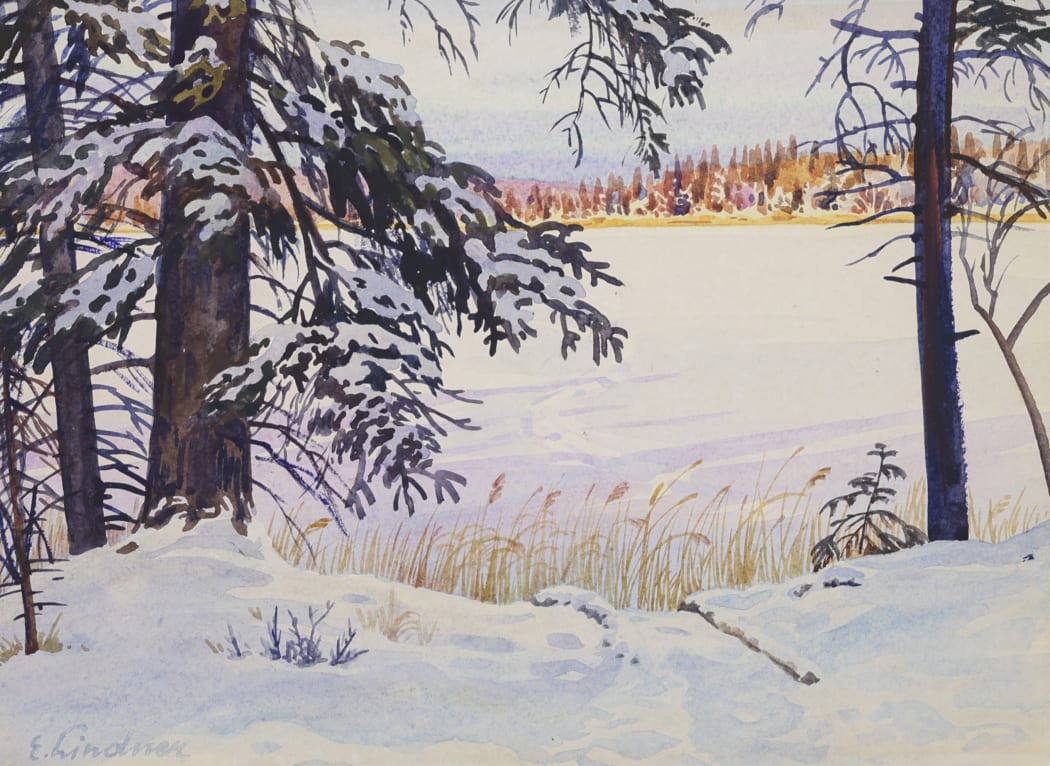 Ernest Lindner; Winter Afternoon
Ernest Lindner; Winter Afternoon -

Tom Thomson
The Enigmatic Genius of Canadian ArtCanada has been home to numerous artists whose works have enchanted art lovers, historians, and fellow artists alike. Yet, few have captured the rugged beauty of the Canadian wilderness and the nation's soul quite like Tom Thomson. Despite a life cut tragically short, Thomson's legacy is vast, resonating in the world of art for over a century.
-
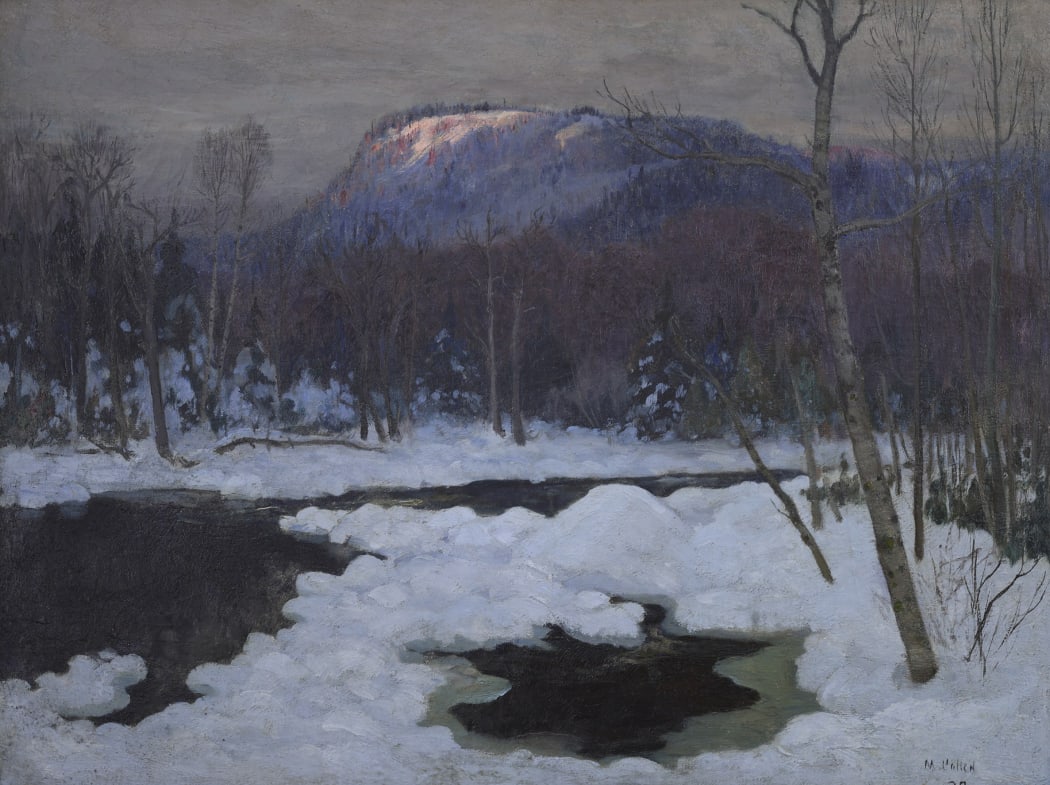 Maurice Cullen; North Cache River, Lake Tremblant
Maurice Cullen; North Cache River, Lake TremblantIn 1956, Maurice Cullen's work was displayed at the The National Gallery of Canada in collaboration with The Art Gallery of Hamilton, The Art Gallery of Toronto and The Montreal Museum of Fine Arts.
Maurice Cullen; Harbour Scene
-
 Tom Thomson
Tom ThomsonHow to Identify Authentic Art
A Guide for BeginnersIn the realm of art, confidence in authenticity greatly influences both the value and the significance of a piece. Yet, distinguishing an original from a well-made forgery can be a challenging task, especially for those new to art collecting. Here's a guide to help you identify genuine artworks.
-
 George Franklin Arbuckle; Near the SaguenayFranklin Arbuckle, a Toronto native, made significant contributions to the Canadian art scene, influenced by mentors from the Ontario College of Art. Marrying into artistry with Frances Ann Johnston, his commercial illustrations, especially for Maclean's magazine during the war era, marked his success. His versatility spanned from murals and tapestries to historical book illustrations, blending commercial success with artistic expression. Arbuckle's legacy lives on through his diverse body of work, reflecting his deep connection with nature and history.
George Franklin Arbuckle; Near the SaguenayFranklin Arbuckle, a Toronto native, made significant contributions to the Canadian art scene, influenced by mentors from the Ontario College of Art. Marrying into artistry with Frances Ann Johnston, his commercial illustrations, especially for Maclean's magazine during the war era, marked his success. His versatility spanned from murals and tapestries to historical book illustrations, blending commercial success with artistic expression. Arbuckle's legacy lives on through his diverse body of work, reflecting his deep connection with nature and history. -
 Frank Milton Armington's life was an enriching journey of art that traversed continents, from his early days in Ontario to his impactful years in Paris. Alongside his wife, Caroline Wilkinson, he immersed himself in the Parisian art scene, later returning to Canada to contribute significantly to the local art community. Armington's legacy is a blend of Canadian identity and European influence and his artworks continue to be celebrated for their timeless beauty.
Frank Milton Armington's life was an enriching journey of art that traversed continents, from his early days in Ontario to his impactful years in Paris. Alongside his wife, Caroline Wilkinson, he immersed himself in the Parisian art scene, later returning to Canada to contribute significantly to the local art community. Armington's legacy is a blend of Canadian identity and European influence and his artworks continue to be celebrated for their timeless beauty. -
 Charles Comfort; Moon Rocks
Charles Comfort; Moon Rocks -
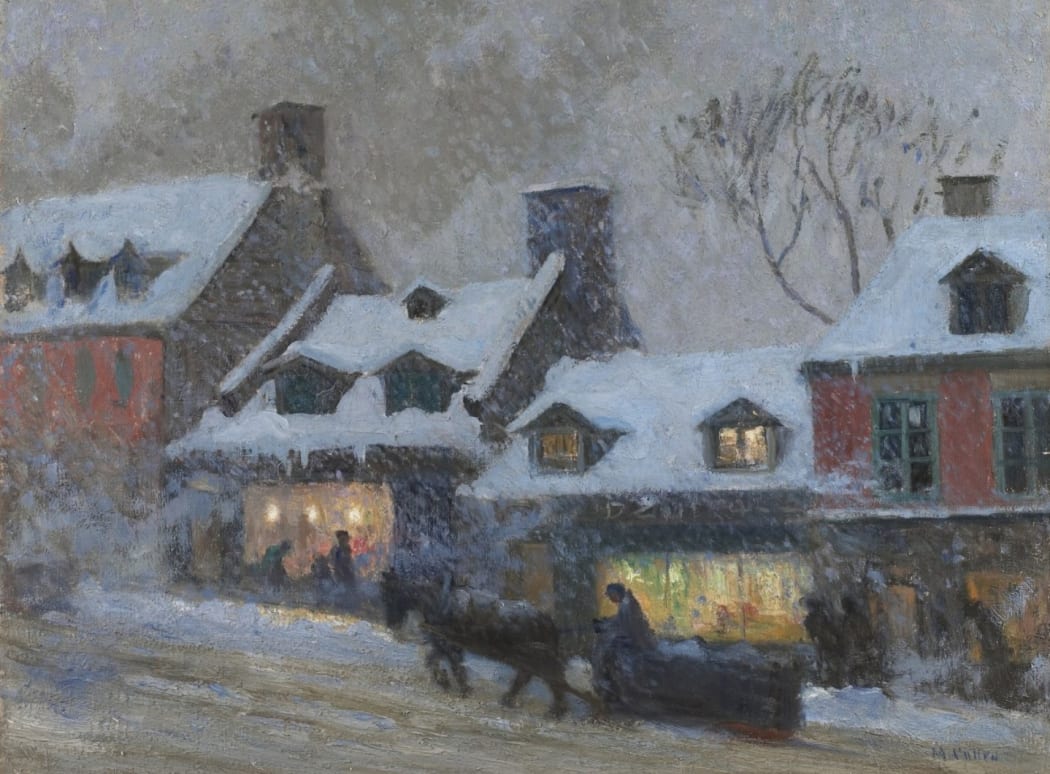 Maurice Cullen; The Bird Shop, St. Lawrence Street, c. 1920
Maurice Cullen; The Bird Shop, St. Lawrence Street, c. 1920 -

